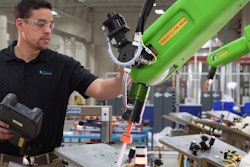
Imagine a machine shop full of mills, lathes, coordinate-measuring machines and all the other tools and processes part of modern manufacturing. You’ve walked this floor before. It looks, sounds and smells just like any other machine shop. But, this one has something different.
Follow the electrical wires coming out of any of the machines, through the junction boxes to the patch panels and outside the building. Witness that this machine shop does not have a connection to the electrical grid, nor is it using local geothermal, wind or solar generators. Instead, just off the shipping dock lies an acre of asphalt filled with stationary bicycles, each of which has a wire running to it and a person pedaling in a steady cadence. This machine shop’s infrastructure is running on the electricity generated by direct human labor.
Imagine it’s late 2019. The machine shop’s orders are good, production is humming and its demand forecasts are solid. Things are so good, in fact, that the machine shop is having trouble hiring enough people to ride its bicycles. Management lays down more asphalt, brings more bicycles online and hires college kids home on winter break. Over the horizon, though, lies the 2020 pandemic.
When it hits, all of the machine shop’s forecasts go out the window. Out of an abundance of prudence, management lays off all but a skeleton crew, including the electricity-generating cyclists. The machine shop keeps enough staff to keep the minimum number of lights on, provide enough power to run a few machines needed for the dribble of orders and nothing more. Even that doesn’t cut costs enough, so management cuts the staff of cyclists down to the bone and hopes that the ones left can pedal harder.
By the time orders start coming back in from customers, the machine shop has spent so far into its cash reserves that it has to build them back up before it can hire more electricity cyclists. They exhort the cyclists on staff to pedal harder, forego breaks, stay longer. And, the cyclists do, but it’s not enough. The machine shop can’t service the increased volume of orders, their performance continues to decline and they quietly shut their doors.
Down the road is another machine shop that managed to weather the pandemic. Instead of acreage of electricity-generating cyclists, their management looked ahead and wired their building directly into the electricity grid. When order volumes dropped, that machine shop reduced its power usage and made it through. More importantly, when customer orders came back, management turned machinery back on, increased their power usage and started shipping.
The data flowing throughout supply chains has become as important today as the electricity. Yet, the vast majority of the companies in those supply chains treat the handling of data like that first machine shop treated electricity; as something to be handled using manual labor.
Manufacturing and supply chain resilience requires the ability for all participants in the supply chain to scale their capacity up and down quickly. While it is rare that a company experiences as drastic a scaling need as the pandemic has caused, it is not rare at all for individual industries to go through their ups and downs and require that same resilience. What we should learn from the pandemic is that no industry is isolated and that the ability to scale up is as important as the ability to scale down.
Labor forces do not scale as well as technology. In order to build resilient scaling into supply chains, first identify areas of risk due to high labor dependency and mitigate those risks by moving to technologies that are more adept at scaling.
This pandemic has shown us that we can no longer accept the risk to our supply chains due to poor data handling any more than we would accept the risk of poor electricity generation. We need to drive all industries globally into efforts such as Industry 4.0 and Digital Thread. It is through those efforts and others similar that we will one day be able to look back in wonder at just how odd it seems that people ever handled data manually.




![Pros To Know 2026 [color]](https://img.sdcexec.com/mindful/acbm/workspaces/default/uploads/2025/08/prostoknow-2026-color.mduFvhpgMk.png?auto=format%2Ccompress&bg=fff&fill-color=fff&fit=fill&h=100&q=70&w=100)







![Pros To Know 2026 [color]](https://img.sdcexec.com/mindful/acbm/workspaces/default/uploads/2025/08/prostoknow-2026-color.mduFvhpgMk.png?ar=16%3A9&auto=format%2Ccompress&bg=fff&fill-color=fff&fit=fill&h=135&q=70&w=240)







